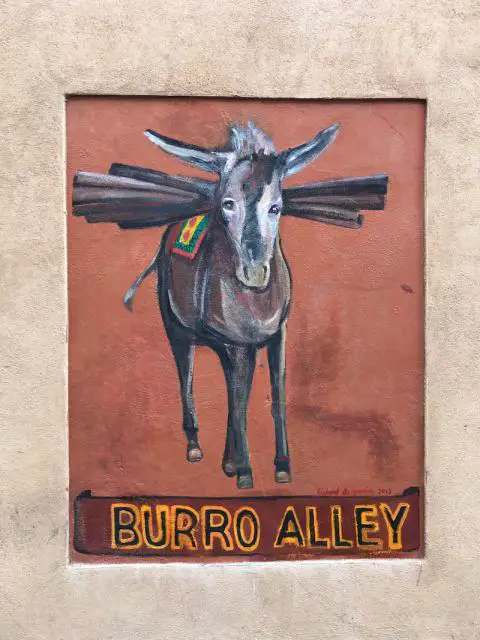Here are two favorite quotes from Anandamayi Ma. I think almost all of these quotes come via Ram Dass, but at the moment I can’t remember what book I saw this in. So at the moment, I assume that Ram Dass or one of his assistants spoke, wrote, or compiled almost all of the following, and I’ll link to one of his books once I can confirm this.
Scala, Java, Unix, MacOS tutorials (page 8)
A great Zen quote from Zen Master Seung Sahn: “If you want Satori, Satori is far, far away.”
(Satori is a Japanese Buddhist term that means enlightenment, awakening, liberation, or self-realization.)
After finishing the book, I Am That, by Nisargadatta Maharaj, I have collected many of this quotes related to enlightenment. Note that he never uses the word “enlightenment,” but instead at least occasionally uses the word “gnani,” which is defined in the glossary as “the knower,” or one who understands “the realization of the unity of all things.”
Nisargadatta Maharaj enlightenment quotes
To get the ball rolling, here are some descriptions of enlightenment from Nisargadatta Maharaj:
In this photo I’m taking a photo of other people taking photos of Denali from the top of the hill in Talkeetna, Alaska. Having lived in Talkeetna, I was fortunate to see Denali many times, but for other people it was rare. The top of Denali can usually only be seen once every eight days, on average.
The road on the right leads into town, and you can’t really see Denali until you come to this point, so it was common to see people suddenly stop on the road, and then turn into this parking area.
(Click on the photo to see a much larger image of Denali.)

I’ve been researching the work of Sri Nisargadatta Maharaj, and per my research and a couple of AI tools, I believe that he gave very practical guidance for using “I am” types of mantras in different situations. Here’s how he suggested using these practices:
During physical sensations/pain
For example, during times when you have pain:
- When you feel pain or physical discomfort, first acknowledge it’s there
- Then remind yourself “I am not this body feeling pain”
- Ask “What am I who is aware of this pain?”
- Notice that you are the awareness in which pain appears, not the pain itself
March 10, 2017: My immune system has been struggling the last two weeks since I had some bad Kroger yogurt. (The yogurt didn’t taste bad, but I got very sick within an hour of eating it.) Today I put a mala on my wrist like I have 10-15 times this year, and after a little while it felt like it was itching and burning. This is what my skin looked like almost half an hour after I took it off. I’m assuming that this is a result of the mast cell disease (MCAS).

“The riddle of life gets solved by following my promise, ‘your form is God’, and by living by these words:
I am not the body. I am formless, pure, and spotless. I am formless, unblemished. I have no birth and death. My light is so bright it outshines the clarity of the Moon and the Sun. How holy and pure we are as Atma ... All objects are animated by the light of the Self. Self is formless and luminous, clearer and purer than any light.
I assure you, again, your consciousness is manifest, Brahman; it is God Hari. Its expressions are many, yet it is ultimately formless. Many have to try to express it with words, yet it is beyond description. What is prior to the sense of being? It is pure Being without the sense of being. It is the eternal existence without beingness. It is untinged, stainless, Parabrahman. The Supreme Absolute.”
~ Sri Nisargadatta Maharaj, I Am Not The Body, pp. 110-111
Because of the MCAS I usually see a series of specialists and only see my primary care physician (PCP) once every year or two, but I had to go her office a couple of days ago. One of the benefits of going there is that she has this terrific view of the Rocky Mountains.

The last time I moved to Alaska I decided to only take what would fit in my RAV-4, so I measured the capacity of my car and then created a RAV-4 simulator in my living room.

“The person merges into the witness, the witness into awareness, awareness into pure being, yet identity is not lost, only its limitations are lost.”
~ Sri Nisargadatta Maharaj, I Am Not The Body
If you happen to walk down the right side street in Santa Fe, New Mexico, you’ll come across this Burro Alley painting on a wall.

“Some may engage in (chanting, singing, and mantras), but the (words) are both the one who sings and listens.”
~ Sri Nisargadatta Maharaj, page 75 of I Am Not The Body
One of my doctors has this photo/image of the altitudes of the mountains that make up the “front range” of Colorado’s Rocky Mountains. I can’t read the signature on the lower-right of the image, but I appreciate whoever put this image together, as I can never remember the names and altitudes of the various mountain peaks.

“Meditation is necessary to maintain consciousness without thoughts. Meditation is to give attention to attention.”
~ Sri Nisargadatta Maharaj, I Am Not The Body
Buddha said, “Do not dwell in the past, do not dream of the future, concentrate the mind on the present moment.”
~ Michael Clark Duncan

A monk was anxious to learn Zen and said, “I have been newly initiated into the Brotherhood. Will you be gracious enough to show me the Way?”
The Master said, “Do you hear the murmuring sound of the mountain stream?”
The monk said, “Yes, I do.”
The Master said, “Here is the entrance.”
~~~
“Listening intently” is a simple, fun meditation practice. Just sit, relax, and listen to your environment like a dog, cat — or a squirrel in the wild, where your life depends on your listening. At work I used to have fun by listening to as many conversations as I could simultaneously.

In mindfulness meditation, “Stagnation is guaranteed if you cling to pleasant sensations.”
~ Daniel Ingram
One of my favorite mindfulness/meditation videos is this Shinzen Young video, Six Common Traps on the Path to Enlightenment.
November 3, 2020
Dear diary,
I got pretty sick this afternoon. That’s always been one thing about this body, if you push it, it will push back. Some of it may be mast cell related, some of it may be kidney related (some of my kidney numbers are not good currently).
Ended up sleeping from noon until 5pm. I have the heat turned up now, drinking warm fluids, and wearing a heavy shirt. When I laid down earlier I started having chest pain, so I took some Benadryl and that eventually went away, but then I slept.
In case these two examples disappear from the ZIO JDBC repository, I have made a copy of them here.
(I say that because earlier this week (late October, 2024) I was told the the ZIO JDBC library is no longer maintained, and then I was also told that they just found a new maintainer.)
That being said, here are the ZIO-JDBC examples. This first one is called Basic.scala: